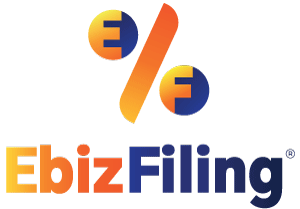
-
April 28, 2023
PF Withdrawal Rules and Limits in India
Introduction
The Employee Provident Fund Organization (EPFO) is a governmental organization that manages the Employee Provident Fund (EPF) scheme for the benefit of employees in India. Under this scheme, both the employee and the employer contribute a fixed percentage of the employee’s salary towards the fund, which can be withdrawn by the employee after retirement or resignation. However, there are certain rules and limits that one needs to be aware of before making a PF withdrawal.
What are the PF Withdrawal Rules?
To make a PF withdrawal, an employee needs to fill up the PF withdrawal form and submit it to the EPFO office. The form can also be submitted online through the EPFO portal. Below are certain rules and regulations that need to be followed while making a withdrawal.
-
Minimum Service Period: An employee needs to have completed a minimum service period of 5 years to be eligible for a PF withdrawal. However, in case of unemployment or illness, an employee can withdraw the provident fund amount before the completion of 5 years of service.
-
Partial Withdrawal: An employee can also make a partial withdrawal of the PF amount for specific purposes such as buying a house, medical treatment, marriage, education, etc. However, there are certain limits on the amount that can be withdrawn for each purpose.
-
Taxation: The PF withdrawal amount is taxable if the withdrawal is made before the completion of 5 years of service. However, if the employee has completed 5 years of service, the withdrawal amount is tax-free.
PF Withdrawal Limits
The PF withdrawal limits depend on the purpose for which the withdrawal is being made. Here are the limits for each purpose:
-
Retirement: An employee can withdraw the entire PF amount after retirement. However, if the employee continues to work even after attaining the age of 58 years, the employee can continue to contribute towards the PF account till the age of 60 years.
-
Resignation: If an employee resigns before completing 5 years of service, the employee can withdraw the entire employee contribution to the PF account along with the interest earned on it. However, the employer’s contribution and the interest earned on it can be withdrawn only after completion of 5 years of service.
-
Medical Emergency: An employee can withdraw up to 6 months’ basic salary and dearness allowance or the total employee’s share with interest, whichever is lower, in case of a medical emergency.
-
Education: An employee can withdraw up to 50% of the employee’s share of interest for the purpose of higher education or for the education of the employee’s children.
-
Marriage: An employee can withdraw up to 50% of the employee’s share with interest for the marriage of self, son, daughter, or sibling.
-
House Purchase: An employee can withdraw up to 90% of the employee’s share of interest for the purchase of a house or for the construction of a house.
Important Points to Keep in Mind
-
Verification of KYC: Before making a PF withdrawal, it is important to ensure that the KYC details such as Aadhaar, PAN, bank account number, etc. are verified and updated in the EPFO portal.
-
Form 15G/15H: If the PF withdrawal amount exceeds Rs. 50,000 and if the employee does not want any TDS deduction, then the employee needs to submit Form 15G/15H to the EPFO office. Form 15G is for individuals below 60 years of age, while Form 15H is for individuals above 60 years of age.
-
Time Taken for Withdrawal: The time taken for PF withdrawal depends on various factors such as the mode of withdrawal, verification of KYC, etc. If the KYC details are verified and updated, then the withdrawal process can be completed within a few days.
-
Online Withdrawal: EPFO has introduced an online withdrawal facility to make the withdrawal process more convenient for employees. The online withdrawal facility is available for employees whose KYC details are verified and seeded with their UAN (Universal Account Number).
Conclusion
PF withdrawal is a crucial aspect that every employee should be aware of. Knowing the rules and limits for PF withdrawal can help employees make informed decisions and avoid any unnecessary delays or complications in the withdrawal process. It is also important to keep in mind the taxation aspect of PF withdrawal and submit the necessary forms to avoid any TDS deduction.
Employee Provident Fund
Extend Social Security to your employees. Register for Provident Fund with Ebizfiling.
About Ebizfiling -










Reviews
Dev Desai
19 Nov 2021Loves their services
Harshit Gamit
19 Apr 2018My GST process was made easier with Ebizfiling. I really appreciate the hard work by your team. Keep up the same in the future. Good Luck!
Kalla swathi
09 Apr 2022Excellent service indeed.. I appreciate the entire team for incorporating my company very well
December 23, 2024 By Team Ebizfiling
How to Get ITR Intimation Password: A Step-by-Step Guide? Filing Income Tax Returns (ITR) is a crucial process for every taxpayer, but sometimes, taxpayers face difficulties when trying to access the Income Tax Department’s portal, especially when it comes to […]
December 4, 2024 By Bhaskar K
How to Fill and Submit an Income Tax Challan Online Paying taxes is essential but can be overwhelming. Filing an income tax challan online simplifies the process, allowing individuals and businesses to make tax payments directly through the official e-filing […]
November 28, 2024 By Team Ebizfiling
Understanding Health Insurance Tax Benefits through an Online Tax Advisor in India Health insurance plays a vital role in securing financial well-being by providing protection against unforeseen medical expenses. However, beyond safeguarding health, health insurance policies in India also offer […]